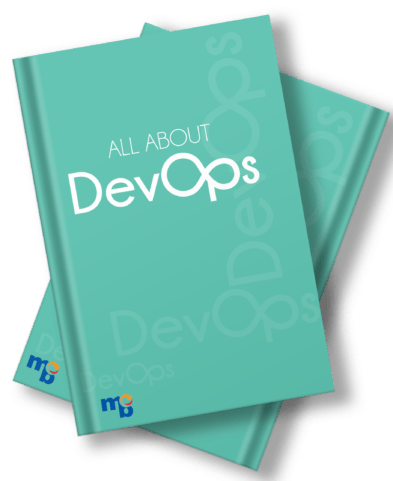The latest buzz in implementing an efficient software development process is platform engineering. For organizations seeking to optimize their software development and delivery processes, the choice between platform engineering and DevOps poses a critical challenge. Platform engineering adopts a strategic approach, emphasizing the creation of robust and scalable self-service platforms.
On the other hand, DevOps revolves around a cultural and operational philosophy, promoting collaboration and communication to break down silos in the development process. As CIOs and CXOs strive for seamless, agile, and efficient software development, understanding the fundamental differences between these methodologies and their potential to complement each other becomes crucial in achieving organizational goals.
This article explains the core distinctions between Platform Engineering and DevOps practices, exploring how they can work together collaboratively to fulfill organizational objectives. Understanding the strengths and weaknesses of both approaches can help CIOs and CXOs craft a comprehensive strategy to optimize software delivery, boost productivity, and drive business growth in the ever-competitive digital landscape.
Platform Engineering involves designing and building a shared and centralized self-service platform that helps developers improve their productivity through automated infrastructure operations. This approach focuses on creating a shared set of tools, frameworks, and services to enable development teams to deliver applications more efficiently and consistently.
In large organizations, each development team may have its own DevOps strategy, leading to scattered tools and processes across different teams. Platform engineers address this challenge by creating a central Internal Developer Platform (IDP) that treats the platform as a product catering to the needs of developers.
They build internal self-service tools required to maintain the platform, ensuring that development teams can access and utilize the platform’s capabilities seamlessly. By doing so, Platform Engineering streamlines the development processes, encourages collaboration within the team, and enhances the overall software delivery within the organization.
Prime responsibilities of Platform Engineering typically include:
Designing scalable platforms that can handle the increasing workload and meet the demands of the expanding user base is one of the primary responsibilities of platform engineering. Investing in microservices architecture that allows for small and manageable services and adopting automation tools to handle repetitive tasks helps to manage complexity paving the way to expand the central platform for user needs.
Using a cloud-based infrastructure that ensures load balancing, automatic scaling, and implementing Infrastructure as Code (IaC) to manage the cloud resources effectively enables in delivery of scalable platforms.
Configuring the infrastructure is of utmost importance in establishing an efficient Internal Developer Platform (IDP). Platform engineers shoulder the responsibility of setting up and maintaining the infrastructure to seamlessly support all platform operations.
This entails managing the installation and configuration of servers, storage, networks, and other essential components or resources necessary for running applications and services.
To ensure consistency and reproducibility in environment setup, platform engineers leverage powerful infrastructure-as-code tools like Terraform, Vagrant, Chef, Puppet, and AWS CloudFormation. By adopting these tools, they minimize the likelihood of configuration errors and significantly enhance operational efficiency throughout the platform’s lifecycle.
In platform engineering, continuous monitoring of platform performance is of utmost importance. Platform engineers incorporate monitoring and observability capabilities directly into the software platform helping in getting valuable insights into application performance, resource utilization, and potential bottlenecks.
Overall, the seamless integration of monitoring and observability functionalities enables Platform Engineering to maintain a high standard of reliability, scalability, and responsiveness, contributing to an enhanced user experience and overall platform success.
Various tools and frameworks are used for platform integration that can perform log analysis, metrics collection, and distributed tracing. Based on this, platform engineers can efficiently troubleshoot issues, optimize performance, and deliver a best-in-class customer experience.
The ability to gain real-time visibility into various aspects of the platform’s functioning empowers them to identify and resolve potential performance bottlenecks swiftly. Troubleshooting issues efficiently enables platform engineers to maintain a robust and reliable IDP, ensuring smooth software delivery and a positive experience for developers and end-users alike
Using automation tools and techniques, platform engineering can help automate repetitive tasks and create an efficient and scalable environment. Identifying manual processes that can be automated by creating scripts, workflows, and infrastructure-as-code templates helps in provisioning the environment, deploying applications, configuration management, and monitoring the setup.
Platform engineering’s process automation ensures consistent and reproducible environments, allowing development teams to work reliably, save time, and reduce errors. This enhances software quality and accelerates delivery by minimizing configuration issues and human errors.
Active collaboration with development teams is necessary and one of the prime responsibilities of platform engineering teams is to understand the needs, gather feedback on the platform, and further align the platform’s capabilities with the requirements of the development process.
Customizing the IDP features and services to align with the needs of development teams ensures that each development team has tools and processes that suit their specific projects, resulting in improved productivity and smoother workflows. Providing ongoing support helps the development teams troubleshoot issues, optimize applications, and leverage platform features effectively.
Organizations that are looking forward to adopting platform engineering for the quick development and deployment of applications while maintaining quality standards should carefully assess the benefits and limitations of the approach. Platform engineering offers numerous advantages, but organizations must also be aware of potential challenges.
By understanding the pros and cons and applying them in real-world use cases, organizations can make informed decisions to implement platform engineering effectively and achieve their development goals.
Using infrastructure management practices such as Infrastructure as Code (IaC) templates and cloud computing techniques helps in designing and implementing efficient infrastructure that supports the scalability, availability, and performance of the platform.
The infrastructure ensures stable and secure operations enables the platform to meet the organization’s evolving needs and demands, and facilitates smooth deployment, scaling, and maintenance of applications and services.
By implementing platform engineering, organizations can achieve standardization of tools and processes across the entire platform, promoting uniformity and consistency. This simplifies management and support, streamlines workflows, encourages collaboration, reduces the risk of errors, and accelerates deployment speed.
In DevOps, standardization is often limited to individual projects or teams, platform engineering on the other hand ensures a standardized approach at the organizational level.
Through their specialized architectural expertise, platform engineers create a custom, unified, and efficient ecosystem that meets the diverse requirements of development teams. Their knowledge in creating platform solutions helps to make well-informed decisions throughout the platform’s lifecycle, guaranteeing a dependable and scalable foundation for the organization’s software development endeavors.
Increased focus on creating a robust and standardized platform infrastructure, might lead to slower development cycles. While the intention is to provide a solid foundation for development teams, the time and effort required for platform design, setup, and maintenance might lead to delays in the immediate development process.
However, this initial investment can lead to more efficient and streamlined development in the long run, as the platform infrastructure becomes optimized and reliable.
As platform engineering aims to create a cohesive and efficient ecosystem, it often involves integrating various technologies, tools, and services.
This complexity can often arise from the need to organize these components to ensure compatibility and handling updates or changes, leading to challenges in maintenance, troubleshooting, and efficient management of the platform’s overall infrastructure.
Developing and maintaining a robust platform architecture requires individuals with expertise in areas such as infrastructure design, automation, security, and scalability. This can lead to challenges in finding, training, and retaining people with the necessary skill set.
Additionally, allocating dedicated resources for platform engineering might put a strain on the organization’s budget and manpower, especially in smaller teams or resource-constrained environments. Despite its benefits, the need for specialized skills and resources can be a potential hurdle in implementing effective platform engineering.
To gain a deeper insight into platform engineering, let’s explore the following use cases that illustrate its advantages and identify potential limitations. These scenarios serve as valuable tools for comprehending the functionality, interactions, and user perspectives of this approach.
Platform engineering can create a centralized API management platform that enables seamless integration between various services and applications. This ensures better control, security, and scalability of APIs, streamlining data flow and promoting efficient interactions between systems.
Setting up and managing a comprehensive API management platform may require substantial upfront effort and ongoing maintenance. Balancing flexibility with standardized practices is crucial to accommodate diverse integration requirements.
Platform engineers can design an internal developer platform that supports microservices architecture and containerization. This allows development teams to develop, deploy, and scale individual microservices independently, fostering flexibility and agility in software development.
Introducing microservices and containerization can increase the complexity of the platform, necessitating expertise in container orchestration and management tools like Kubernetes. Platform engineers need to ensure seamless coordination between microservices for efficient interactions.
Platform engineers can design a data management and analytics platform that centralizes data storage, processing, and analysis. This enables data scientists and analysts to access and utilize data more effectively, driving data-driven decision-making and insights.
Building and maintaining a data-centric platform requires specialized skills in data engineering and analytics tools. Ensuring data security, privacy, and compliance is crucial in managing large volumes of sensitive information.
DevOps comprises tools and practices that help in integrating and automating the software development process to increase the speed and quality of software deployment. Implementing DevOps in the development process entails bringing about a cultural shift that focuses on breaking silos and improving collaboration between the development and operations teams.
Using various technological stacks and tools, DevOps facilitates development in an iterative manner, mitigating risks through early detection of issues, and increasing the reliability of the products. DevOps as a Service can help in Continuous integration and continuous delivery (CI/CD) for regular integration of code, automated testing, and deployment of code.
Key responsibilities of DevOps include:
DevOps team collaborates with development teams to achieve efficient software deployment in the production environment, aiming to minimize downtime. The team automates deployment pipelines, monitors success, resolves issues, and guarantees a smooth and reliable release of software to the intended environment.
The objective is to reduce errors, decrease downtime, and improve the speed and reliability of bringing software into production.
Setting up an automated delivery pipeline involves creating an automated workflow that includes the various stages of software development such as testing, deployment, and monitoring to compile, construct, test, and deploy software code faster and easier.
By automating this pipeline, development and operations teams can ensure consistent and reliable delivery of software updates, reduce manual intervention, minimize errors, and achieve faster release cycles. This automation helps in maintaining a smooth and efficient development process, from code integration to the final deployment in production environments.
Implementing CI/CD practices involves establishing automated procedures that enable developers to regularly merge their code changes into a shared repository. This integration initiates automated tests, detecting potential issues early in the development cycle.
Once the code passes these tests, it is automatically deployed to the testing or staging environment for additional validation. After successful validation, the code can be automatically promoted to the production environment.
By implementing CI/CD practices, DevOps teams ensure a smoother and more streamlined development workflow. This approach reduces the chances of integration challenges at the end of development cycles, minimizes manual intervention, and accelerates the delivery of reliable and tested software to users.
Related Read: How to Implement Continuous Integration for Quality Automation in Product Engineering?
Monitoring and optimizing the performance of software applications and infrastructure throughout their lifecycle is important to ensure that the applications and systems perform efficiently, deliver a smooth user experience, and meet predefined performance metrics.
This involves monitoring resource utilization, identifying bottlenecks, analyzing performance data, and making necessary adjustments to enhance the overall performance and scalability of the software.
Additionally, it might also involve coordinating within the development and operations teams to address performance-related issues promptly and ensure continuous improvement in the performance aspect of the software.
Responding to incidents involves addressing and resolving unexpected disruptions or issues within a software or system. DevOps teams play a crucial role in identifying the root cause of these incidents, assessing their impact on system functionality, and taking necessary measures to mitigate and rectify the problems.
This often requires collaboration with various cross-functional teams to ensure efficient resolution, minimize downtime, and maintain the smooth operation of the software or service.
They also set up preventive measures in place to avoid similar incidents in the future, thereby contributing to continuous enhancements in overall system reliability and stability.
DevOps aims to enhance collaboration and communication between different cross-functional teams and break down silos by fostering open communication, knowledge sharing, and joint problem-solving.
This leads to the creation of a more cohesive and efficient development environment and better alignment of goals, faster feedback loops, and ultimately, the delivery of higher-quality software products.
Continuously seeking ways to enhance workflows, systems, and practices helps in promoting continuous improvement within the development process. It also entails encouraging a culture of continuous learning and growth within the team, aiming to refine and optimize processes over time for better efficiency, reliability, and quality.
Identifying manual tasks prone to errors and inefficiencies and replacing them with automated solutions promotes automation in DevOps.
DevOps, when combined with Agile development practices, can accelerate an organization’s development and delivery processes, leading to the creation of robust and dependable products. However, this approach demands a cultural shift for the successful adoption of DevOps practices. Organizations should thoroughly comprehend the benefits and drawbacks of this approach to reap in maximum benefits of this approach.
DevOps accelerates software delivery and deployment through automated workflows and continuous integration practices. By automating manual tasks, such as code integration, testing, and deployment, DevOps reduces the time required to deliver updates and new features.
This agility enables organizations to swiftly respond to shifting market demands, introducing improvements and innovations more rapidly than traditional development methods. As a result, users experience quicker access to the latest software enhancements, which can lead to increased customer satisfaction and a competitive edge in markets.
Improved collaboration between development and operations teams is a crucial aspect of DevOps practices. By sealing the gap between these groups, organizations promote better communication and shared goals. This alignment leads to smoother software development cycles as development teams gain a deeper understanding of operational requirements and constraints, resulting in more effective and reliable code.
The reduced silos and enhanced cooperation minimize errors, facilitate faster issue resolution, and create an environment where both teams work together seamlessly, contributing to the overall success of the software delivery process.
Continuous Integration and Delivery (CI/CD) are fundamental DevOps practices that revolutionize the software development lifecycle. CI allows developers to regularly merge their code changes into a central repository.
This process ensures that code from different team members is integrated frequently, preventing issues that often arise during last-minute integrations. Automated testing in the CI phase quickly identifies bugs, allowing developers to address them early, which significantly improves software quality.
The seamless transition from CI to CD ensures that the tested code is automatically deployed to testing or staging environments, leading to more stable and reliable releases. CI/CD practices streamline the development process, foster collaboration, and significantly improve the overall efficiency of software delivery.
Implementing DevOps requires a shift in mindset and adopting new practices, which can lead to a learning curve for teams accustomed to traditional methods. This transition might initially slow down processes.
While automation simplifies certain tasks, managing automated infrastructure can become complex if not properly designed and monitored. This complexity might lead to unexpected issues and downtime.
DevOps emphasizes cultural and organizational changes to break down silos and promote collaboration. Resistance to these changes or inadequate implementation can hinder the effectiveness of DevOps practices.
Consider the following use cases that explain the benefits and challenges of implementing DevOps for software development.
Setting up CI/CD pipelines enables automatic integration, testing, and deployment of code changes. This results in faster error detection, smoother development cycles, and more reliable software releases. Frequent releases lead to improved customer satisfaction and quicker response to market demands.
The initial setup of CI/CD pipelines can be complex and require adjustments to existing workflows. Maintenance demands continuous monitoring and updates, and fine-tuning automated tests might be needed to avoid false positives or negatives. Additionally, legacy system integration might pose challenges.
Automating infrastructure provisioning through tools like Infrastructure as Code (IaC) ensures consistent and reproducible environments. Scalability becomes more manageable, and deployments are less error-prone. This approach increases operational efficiency and reduces manual configuration efforts.
The initial automation setup can be intricate, demanding a learning curve. Complex configurations might arise, leading to difficulties in debugging and managing automated resources. Ensuring proper security measures and aligning infrastructure automation with existing processes might pose challenges.
Streamlining deployment and release management improves software delivery speed and reliability. Controlled and frequent releases lead to quicker feature updates and bug fixes, enhancing user satisfaction. The process promotes collaboration and transparency between development and operations teams.
Coordinating and managing frequent releases can be challenging, requiring effective communication and synchronization. Potential conflicts between different components or versions might arise during deployments. Organizations need to strike a balance between rapid releases and maintaining stability.
Although Platform engineering and DevOps differ in their approach to enhancing the software development process, both share the common objective of automating processes for developing quality products.
Increased collaboration between these two methodologies to synergize the automated development and deployment process in the development process can improve decision-making, increase ROI, better security, greater speed, enhance workflows, and improve scalability. The advantages are numerous and collaboration between these two approaches can prove advantageous in these key areas:
Collaboration between Platform Engineering and DevOps in automating infrastructure is crucial for optimizing software development and deployment. Platform Engineering brings its expertise in designing and maintaining the underlying infrastructure, while DevOps focuses on streamlining the deployment and operations processes.
Platform Engineering designs the architecture, defines best practices, and sets up tools that facilitate Infrastructure as Code (IaC) practices. DevOps works closely with Platform Engineering to implement these practices, ensuring that the infrastructure provisioning and management become automated, consistent, and version-controlled.
By collaborating on automating infrastructure, both teams can ensure that environments are reproducible and scalable, reducing the chances of configuration errors and minimizing the time required for provisioning resources. This collaboration also allows for quicker adaptation to changing requirements and enhances the speed of development and deployment cycles.
Through this collaboration, platform engineering and DevOps lay the foundation for a robust and efficient infrastructure that supports agile development practices, accelerates time-to-market, and enhances the overall reliability and stability of the software ecosystem.
Implementing Continuous Integration and Continuous Delivery (CI/CD) practices is instrumental in achieving efficient and reliable software delivery. Platform engineering contributes its infrastructure knowledge, while DevOps contributes its automation and deployment expertise. Platform Engineering helps in setting up the necessary resources and environments for CI/CD pipelines, ensuring they are scalable and secure.
DevOps, in collaboration with platform engineering, configures these pipelines to automate code integration, testing, and deployment. This joint effort ensures that code changes are seamlessly integrated, tested, and released in a controlled manner.
By integrating CI/CD practices, software development becomes more agile, as each code change is validated and deployed quickly, minimizing the risk of defects reaching production.
Implementing CI/CD by adopting the best practices of both platform engineering and DevOps results in a streamlined development process, faster feedback loops, and a more efficient deployment cycle, ultimately enhancing software quality and customer satisfaction.
Improved collaboration is essential for fostering a cohesive and effective software development ecosystem. By working together, platform engineering and DevOps teams can bridge the gap between infrastructure design and operational implementation.
Through shared responsibilities, both teams gain insights into each other’s domains, enabling faster issue resolution and informed decision-making.
This collaboration enhances communication, reduces friction, and promotes a unified approach to problem-solving. Shared responsibilities also result in increased ownership and accountability for the overall health and performance of the software ecosystem.
By combining the strengths of platform engineering and DevOps in a collaborative framework, organizations create an environment of knowledge sharing, leading to more efficient troubleshooting, quicker adaptations to changes, and ultimately, a smoother software delivery and operational experience.
Monitoring and continuous improvement are crucial for maintaining the health and performance of software systems. Platform engineering designs robust monitoring solutions that track the performance of both the application and the underlying infrastructure.
DevOps collaborates with platform engineering to implement these monitoring tools, ensuring that they capture critical metrics, logs, and alerts effectively.
This joint effort enables real-time visibility into system behavior, rapid detection of anomalies, and swift response to potential issues. By analyzing the collected data, both teams can make informed decisions, identify areas for optimization, and implement continuous improvements to enhance system reliability and efficiency.
Collaboration between platform engineering and DevOps in monitoring and continuous improvement fosters a proactive approach to maintaining software systems, mitigating risks, and enhancing user experiences through optimized performance and timely issue resolution.
Improved scalability and resilience are essential factors for creating software systems that can grow seamlessly and withstand challenges. Platform engineering designs architectures that can dynamically scale to accommodate increased workloads.
DevOps collaborates with platform engineering to implement auto-scaling mechanisms and manage resource allocation, ensuring that the system remains responsive even during peak usage.
This partnership enables the system to handle fluctuations in demand while maintaining performance and responsiveness. By focusing on resilience, both teams work together to identify potential points of failure, implement redundancy strategies, and design disaster recovery plans.
Through the joint effort of platform engineering and DevOps, software systems become robust, capable of adapting to changing demands, and resilient in the face of failures. This collaboration leads to enhanced user experiences, reduced downtime, and a more reliable and scalable software ecosystem.

As two different methodologies vital for streamlining and enabling the development of efficient and quality products, Platform Engineering and DevOps both have one crucial aspect in common — Automation. Leveraging automation to derive benefits from these approaches can help organizations achieve greater results and enhanced scalability, performance, and reliability.
As platform engineering continues to evolve, coupling this innovative approach with DevOps can boost efficiency and accelerate innovation.
Mindbowser has crafted comprehensive end-to-end solutions that can help organizations adopt Platform Engineering in their development process. Mindbowser’s Platform Engineering services can help organizations derive maximum benefits from Platform Engineering and DevOps to streamline software delivery for enhanced scalability and performance.
Our focus on reliability and availability guarantees uninterrupted operations, while efficient incident response minimizes downtimes. Facilitated collaboration, automation, and continuous improvement lead to higher productivity and cost optimization, making Mindbowser your trusted partner in driving innovation, efficiency, and success for businesses in the modern technological landscape.
Platform engineers play a crucial role in software development processes by providing the foundational infrastructure, tools, and frameworks that support efficient and reliable software delivery. They contribute in several ways to:
Platform Engineering and DevOps roles can merge into a single team, known as “PlatformOps” or “DevOps Platform,” in some organizations. This team handles both infrastructure and DevOps practices, creating a more unified approach to software development and operations. Here, platform engineers and DevOps professionals share responsibilities like infrastructure automation, managing CI/CD pipelines, and ensuring software scalability and resilience. This collaboration enhances agility, speeds up issue resolution, and strengthens alignment between infrastructure and application development.
Platform engineering ensures a stable and scalable infrastructure, while DevOps handles automation, deployment, and monitoring. Their collaboration establishes CI/CD pipelines for automated code integration, testing, and deployment, resulting in faster feedback, early bug detection, and improved software quality. Continuous monitoring and data-driven decisions ensure reliability and optimal performance throughout the software’s lifecycle.
Investing in platform engineering and DevOps provides organizations with accelerated and dependable software delivery via automation, CI/CD pipelines, and efficient deployments. Collaboration between platform engineers and DevOps fosters smoother operations, shared responsibilities, and improved communication, reducing friction. Additionally, the emphasis on monitoring, scaling, and resilience yields better system performance, adaptability, and higher software quality, leading to enhanced customer satisfaction and competitive advantage.
Implementing platform engineering and DevOps involves key best practices:

Increase profitability, elevate work culture, and exceed productivity goals through DevOps practices.
Download NowJoin us for “Your 24/7 Clinical Knowledge Partner – The AI Companion” Webinar on Thursday, 30th July 2025 at 11:00 AM EDT
Register Now

We worked with Mindbowser on a design sprint, and their team did an awesome job. They really helped us shape the look and feel of our web app and gave us a clean, thoughtful design that our build team could...


The team at Mindbowser was highly professional, patient, and collaborative throughout our engagement. They struck the right balance between offering guidance and taking direction, which made the development process smooth. Although our project wasn’t related to healthcare, we clearly benefited...

Founder, Texas Ranch Security

Mindbowser played a crucial role in helping us bring everything together into a unified, cohesive product. Their commitment to industry-standard coding practices made an enormous difference, allowing developers to seamlessly transition in and out of the project without any confusion....

CEO, MarketsAI

I'm thrilled to be partnering with Mindbowser on our journey with TravelRite. The collaboration has been exceptional, and I’m truly grateful for the dedication and expertise the team has brought to the development process. Their commitment to our mission is...

Founder & CEO, TravelRite

The Mindbowser team's professionalism consistently impressed me. Their commitment to quality shone through in every aspect of the project. They truly went the extra mile, ensuring they understood our needs perfectly and were always willing to invest the time to...

CTO, New Day Therapeutics

I collaborated with Mindbowser for several years on a complex SaaS platform project. They took over a partially completed project and successfully transformed it into a fully functional and robust platform. Throughout the entire process, the quality of their work...

President, E.B. Carlson

Mindbowser and team are professional, talented and very responsive. They got us through a challenging situation with our IOT product successfully. They will be our go to dev team going forward.

Founder, Cascada

Amazing team to work with. Very responsive and very skilled in both front and backend engineering. Looking forward to our next project together.

Co-Founder, Emerge

The team is great to work with. Very professional, on task, and efficient.

Founder, PeriopMD

I can not express enough how pleased we are with the whole team. From the first call and meeting, they took our vision and ran with it. Communication was easy and everyone was flexible to our schedule. I’m excited to...

Founder, Seeke

We had very close go live timeline and Mindbowser team got us live a month before.

CEO, BuyNow WorldWide

Mindbowser brought in a team of skilled developers who were easy to work with and deeply committed to the project. If you're looking for reliable, high-quality development support, I’d absolutely recommend them.

Founder, Teach Reach

Mindbowser built both iOS and Android apps for Mindworks, that have stood the test of time. 5 years later they still function quite beautifully. Their team always met their objectives and I'm very happy with the end result. Thank you!

Founder, Mindworks

Mindbowser has delivered a much better quality product than our previous tech vendors. Our product is stable and passed Well Architected Framework Review from AWS.

CEO, PurpleAnt

I am happy to share that we got USD 10k in cloud credits courtesy of our friends at Mindbowser. Thank you Pravin and Ayush, this means a lot to us.

CTO, Shortlist

Mindbowser is one of the reasons that our app is successful. These guys have been a great team.

Founder & CEO, MangoMirror

Kudos for all your hard work and diligence on the Telehealth platform project. You made it possible.

CEO, ThriveHealth

Mindbowser helped us build an awesome iOS app to bring balance to people’s lives.

CEO, SMILINGMIND

They were a very responsive team! Extremely easy to communicate and work with!

Founder & CEO, TotTech

We’ve had very little-to-no hiccups at all—it’s been a really pleasurable experience.

Co-Founder, TEAM8s

Mindbowser was very helpful with explaining the development process and started quickly on the project.

Executive Director of Product Development, Innovation Lab

The greatest benefit we got from Mindbowser is the expertise. Their team has developed apps in all different industries with all types of social proofs.

Co-Founder, Vesica

Mindbowser is professional, efficient and thorough.

Consultant, XPRIZE

Very committed, they create beautiful apps and are very benevolent. They have brilliant Ideas.

Founder, S.T.A.R.S of Wellness

Mindbowser was great; they listened to us a lot and helped us hone in on the actual idea of the app. They had put together fantastic wireframes for us.

Co-Founder, Flat Earth

Mindbowser was incredibly responsive and understood exactly what I needed. They matched me with the perfect team member who not only grasped my vision but executed it flawlessly. The entire experience felt collaborative, efficient, and truly aligned with my goals.

Founder, Child Life On Call

The team from Mindbowser stayed on task, asked the right questions, and completed the required tasks in a timely fashion! Strong work team!

CEO, SDOH2Health LLC

Mindbowser was easy to work with and hit the ground running, immediately feeling like part of our team.

CEO, Stealth Startup

Mindbowser was an excellent partner in developing my fitness app. They were patient, attentive, & understood my business needs. The end product exceeded my expectations. Thrilled to share it globally.

Owner, Phalanx

Mindbowser's expertise in tech, process & mobile development made them our choice for our app. The team was dedicated to the process & delivered high-quality features on time. They also gave valuable industry advice. Highly recommend them for app development...

Co-Founder, Fox&Fork
